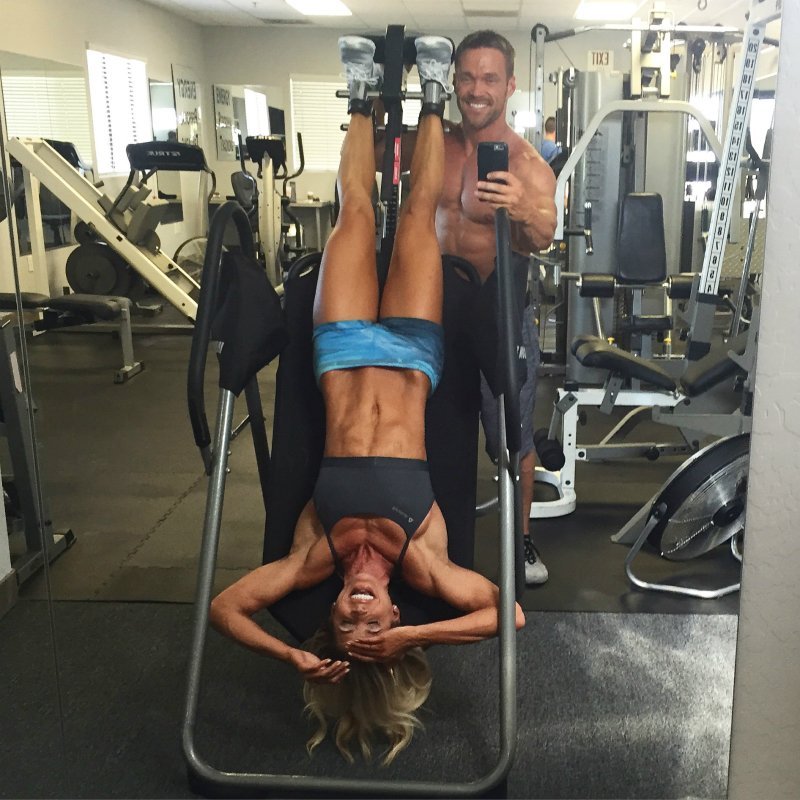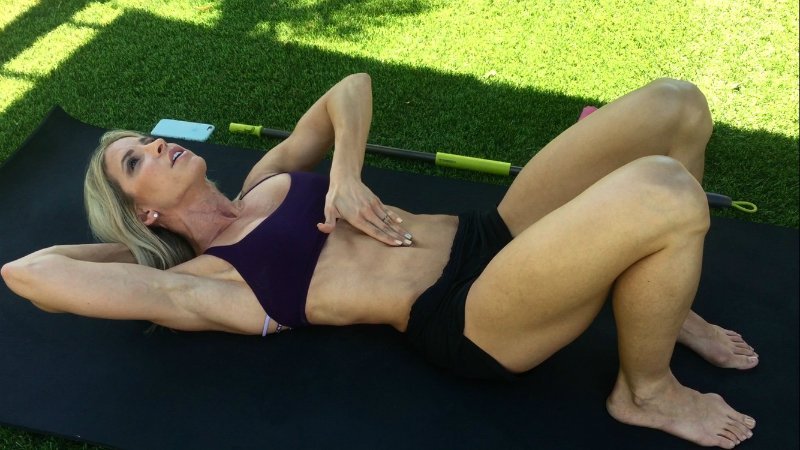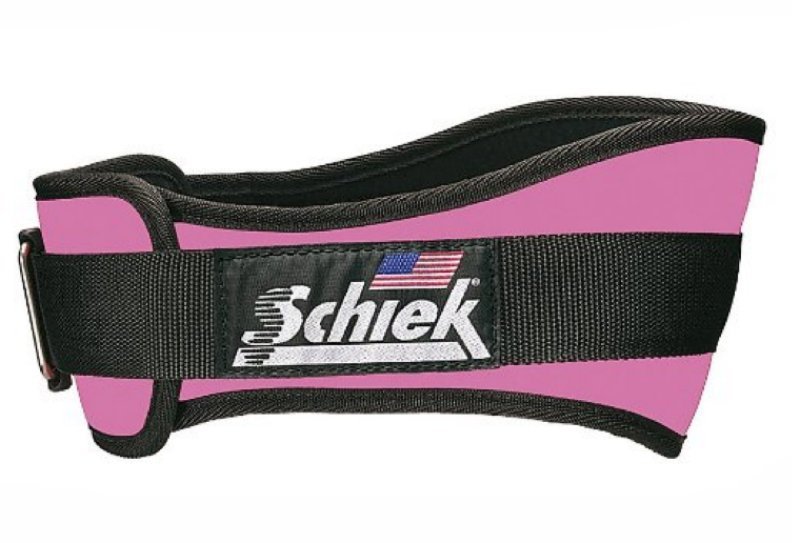Ok, here it is! Girl to girl, we need to discuss something I THINK is more common than I’ve ever believed! I’m getting a little personal and a little science-y on you today to talk about diastasis recti. Diastasis rect-who? Rect-ME! (Ok, stop).
I’m going to warn you up front. There is SO much to cover in this post—it’s a little long. If you wanna’ get straight to the meat (or the exercises you can do to fix your diastasis recti), scroll down. If you wanna’ learn more and figure out if you have this condition, keep reading.
Let me get you up to speed. Diastasis recti generally happens during pregnancy when the two large parallel bands of abdominal muscles separate due to the expanding uterus. Some women’s ab muscles go back to normal after the baby is born, and some do not…mine never have, and chances are yours haven’t either—which is why you are here.
The good news is that the diastasis caused by pregnancy can be corrected with exercises and stretches designed to optimize deep core muscular function. So ladies, don’t worry—your body wants to function right, and it will. We just need to wake up the right core muscles and teach them what to do! But let’s not get ahead of ourselves. Saving that for later.
Now how this happens and why it is worse for some women, no one is 100% sure. But we can hypothesize. It’s been said to be hereditary, but it may also be caused by working out your abs too soon after a baby is born, or even doing the wrong exercises WHILE pregnant. While I didn’t workout during ALL of my pregnancies (just the last 2), I personally feel like working my abs hard during prego worsened my condition. But that’s just my opinion.
Crazy fact, I didn’t even notice my ab separation until after Cash was born!! Yes, 3 kids later. I mean, I knew it was there, but I didn’t realize it was a medical condition. Embarrassingly enough, I always just thought I had definition down the center of my abs! Ha! Nope…wishful thinking. Just diastasis. Once I realized this odd look my midsection had wasn’t normal, nor was it normal for me to be able to literally stick my hand inside of my abs and touch my insides with just skin separating, I knew I had to do something about it. If you’d like a visual, just check out the pic below. This was posted on social media a couple of weeks back, and I got an overwhelming response from women (you!) that suffer from the same condition…
From a medical standpoint, until recently, I had a little over a 3-finger sized gap between my abs that was physically unprotected. Like I said, intestines…right below my skin. And during certain ab exercises, my insides would actually protrude through my abs, forming a weird point. Disgusting, I know. And it’s even scarier to think how vulnerable my vital organs were. If this went untreated, I could suffer from a major intestinal hernia, and given my level of activity (and types of heavy lifting), chances of this happening are higher than most. I mean, I already have an obvious umbilical hernia (my dramatic outtie belly button) so I figure I am more prone than most…
Extensive research on the topic taught me a few things…one of them being there are a handful of factors that make a woman more susceptible to diastasis recti:
- Having more than one child/pregnancy
- Having pregnancies close together
- Being?over the age of 35
- Having big babies
- Having multiple births
I know…some of you are looking at this ist realizing you’ve been double—or even quadruple—whammied! (I?m raising my hand to a couple). Don?t beat yourself up about what you cannot change because diastasis recti is very common—about 67% of all postpartum women have it. So you (and I) are in good company.
If you’re not sure if you are among the lucky few who steered clear of this pregnancy consequence, here’s an easy way to check:
- Lie on your back with your knees bent, soles of your feet close to your booty.
- Place one hand behind your neck and the other hand on your abdomen with your fingertips flat at your belly button, fingers facing downward.
- Gently push your fingertips into your abdomen while rolling your upper body off of the floor, chin towards the ceiling.
- Feel for a separation between those two ab muscles. Experts say that a 2-2.5 finger or more spread signals diastasis recti.
Now, let’s talk about our options moving forward. We can go the immediate and potentially easy (but expensive) route with surgery. BUT, surgery is not always recommended if you are still in your childbearing years…I mean think about it, one more baby, and you’ll pop those abs right back apart! As well, there is no guarantee that surgery will be 100% effective. (SIDE NOTE…Research on this topic started once Chris told me NO to this option because he wants more babies! Another topic for another day…but…).
So for me, at-home exercises and remedies are the way to go. Anytime I can avoid going under the knife, I will. And worst case? If the exercises don’t work, surgery as an option is always going to be there.
Before we go farther—a very important disclaimer: The following “fixes” are all based on my experience and my research, so please check with your doc BEFORE doing anything for your diastasis recti since each case is different. Okay, here goes:
Over this past year, my training protocol has changed as I have transitioned from CrossFit-style workouts to body building. Along with the training change-up, I changed the way I worked my abs too, focusing on decreasing (actually eliminating) the typical ab exercises and increasing the deep-core muscle exercises. I am happy to report that over this year, my abdominal muscle separation has decreased dramatically to less than 2 fingers!! But it still isn’t quite where I need it to be to consider myself healed.
The proof is in the pudding for me: A lot of this boils down to doing the RIGHT exercises. I realize that for so long I was doing what I intuitively thought would work (swing ups, sit ups, V ups, knees to bar, etc), but in reality, these move were working against me by ONLY working my Rectus Abdominus. The REAL muscles that needed working are known as the Transversus Abdominus and Lumbar Multifidus. These are the the most neglected of the ab muscles, but also happen to be arguably the most important. They lie beneath the Rectus Abdominus, supporting posture, controlling breathing during heavy lifts, and supporting the back. These are the muscles elite athletes work to add explosive power to training and are also the muscles we mamas need to work to relieve back pain, create a tighter midsection, AND improve our diastasis recti.
Some at-home exercises you can do to focus on these important muscles are below. I’ve also recorded a demonstration video for you (at the bottom of the post) so you can SEE how to perform these moves right and hear my instructions. Make sure that when you do these moves, you focus and move slowly—keeping the mind body connection. In other words, don’t just go through the moves. You’ll notice that breathing is a KEY component to all of these movements: Deep inhales, and exhale when you activate the muscles.
-
- Drawing In Exercise: Now technically every single move listed below requires you to “draw in,” so I figured I would do a little explaining. Drawing in is NOT sucking in (which uses the outer muscles). Drawing in is done by allowing those inner muscles to pull your abdomen deep inside toward your spine. Draw in from the lower region of your abs. Drawing in is something you can do in sets for as long as you can hold (work up to 60 seconds at a time), or it’s something you can simply do as you walk around your house. Believe it or not, your posture will improve big time with this! This can be done standing, sitting, lying down…you name it. Just DRAW IN!
- Vacuuming: No…not vacuuming your carpet (although I guess technically you can vacuum ON your carpet). I’m talking about the core exercise known by this name. I know I’ve talked about this before, but I’m going to talk about it again. Easily explained, simply stand up straight, inhale deeply, followed by an exhale. Once all of the air is deflated from your lungs, draw your belly button in and up toward your spine. HOLD (as tough as it is) for as long as you can. I aim for 30 seconds, but if holding your breath that long isn’t doable, simply keep the clock running and keep your belly button in and tight as you slowly breathe for the remainder of the 30 seconds. Try for 5-10 reps a day.
- Broomstick Rotations: With a dowel or a broomstick behind your neck, perform a vacuum, then when all air is exhaled and you are holding your breath with your abs squeezed, slowly rotate from side to side until you cannot hold your breath any longer. Breathe. Repeat 5-10 times.
- Abduction with Core Activation: Lie on your back with a resistance band around your knees. Exhale, engage your core and pelvic floor and pull your knees apart. Relax, inhale, and repeat for 10 reps. Be sure to keep your spine neutral and don’t press your lower back into the ground.
- Heel Slide: Lie on your back with both knees bent, feet flat. Exhale as you engage your core and pelvic floor, and slide one heel slowly along the ground until your leg is straight. Inhale and relax, then engage your core, exhale, and draw that heel back. Do 5 reps on each leg.
Once again, scroll to the bottom for my step-by-step video.
Now when it comes to traditional training and weight lifting, consider wearing a weight belt. It has worked WONDERS for me. Not only will a weight belt support your core while lifting heavy loads, but more importantly, it will act as a cue/reminder to activate and draw in with your core while lifting. Otherwise, we are naturally prone to distending our bellies during heavy lifting, only worsening our diastasis recti. This is the one I use…
So ladies, however you choose to take care of your diastasis recti, whether DIY exercises or surgery, know you are making the choice that is right for you! It’s a medical condition and not just a vain aesthetic concern, so if surgery is what you choose, then surgery it is! But if exercises are your method of healing, please keep me up to speed on your progress.
And in the meantime, have those babies, LOVE those babies, and appreciate every consequence of having such perfect little miracles! #BattleWounds
And finally…the demonstration vid…;)
Xoxo,
Heidi
Related reading:
Ask Heidi Anything: Carb Cycling While Prego?
My 1st Post Ruby Workout
My Pregnancy Workout: The Nasty 9s
My 5 Gym (and Home Gym) Must-Haves






262 Responses
Thank you! These are by far the best diastasis recti exercises I’ve ever done!
I just want to thank you SO much for sharing these exercises! It has made such a BIG difference in my stomach! I have such a small frame and my stomach stuck out so much even though I was back at my pre-pregnancy weight. This gives me so much more confidence and I can wear the clothes I used to wear again without worrying that I still look pregnant!
hello, i just want to ask ive plan to have my second child but i noticed that i have this gap, is it okay to get pregnant with it, or ill just heal it at once before getting pregnant again, thanks if you’d answer this ..
Hi Sheera: With any form of diastasis recti, it’s best to discuss any questions and concerns you have with your healthcare team. We wish you all the best!
I?m a mom of 3, age (8, 4 and 2) and I just heard about DR from a friend. I measured it and it?s a 2 fingers gap. I?m a petite woman (5?3? 105lb) so my pooch belly is obvious. Since the last baby was 2 years ago, is it healed or I would need to work out? If I do need to put some effort into it, what kind of workout do you recommend? I really want a flat tummy, abs would be great too 🙂 Thank you!
Hi Jess: If you have any questions or concerns about whether or not you have DR, I’d definitely talk with your healthcare team. Since you did find a 2-finger gap, you probably do have DR, but again, I’d talk with your healthcare team as far as workouts go and if vacuum twists will work for you. We’d hate to recommend something that wouldn’t be best for you and your goals. 🙂
Thank you for the post.
I?m 2.5 months PP and realize I have a two finger separation ;/
My questions is while I do all the exercises from your post, can I still workout? I did crossfit for years and I also, transitioned over the last two years into more of a body building training type.
I was able to workout until the day before I gave birth and able to workout again before the 6 weeks PP.
Now, I?m just wondering if I can still lift since we kind of use our core for more than just abs exercises.
Thank you in advance for your response.
Hi Steph! Yes, you can still work out, but be careful of doing core-specific exercises other than those to help heal diastasis recti until your gap is healed. Hope that helps!
Hi! I?m a mom of two my oldest is 12 and I?ve noticed recently that my abs are building out rather than getting that flat toned look. I did a self check for DR and I don?t have it from what I can tell. What else would cause my abs to build out? I want a flat tummy but it seems the more I work my abs they get toned but bulkier and makes me look like I have a little pouch. It?s frustrating. Any tips for this.
Hi Rebecca: I would recommend concentrating more on these vacuum twists (https://heidipowell.net/19042), which work the inside ab muscles more, and less on specific core work. This is what Heidi recommends. Hope this helps!
Which doc/surgeon did Heidi end up using for her correction surgery? I?ve been told my gap and hernia are so far gone, surgery is only option. I want a surgeon who will correct hernia and sew abs back together. Two sets of twins did me in
Hi Ashely: Unfortunately, I don’t have that information. And two sets of twins? Wow! That’s amazing! 🙂
i?m 13 years old and i have this and idk why because i?ve never had kids and i really hate my body because all my friends have flat stomach and abs and mine potruds out and looks weird idk what to do…
Hi Sky: Thank you for your comment. 🙂 It can be so tough to be a teen these days. And it’s so easy to compare our unique bodies to everyone else’s. The best things you can do are to make sure you’re eating a healthy diet full of lean proteins (chicken, pork loin, etc.), healthy carbs (beans, fruits, vegetables, whole grains), and healthy fats (nuts, etc.). And be sure you’re drinking water every day, too, and getting in some type of movement most days of the week. And we’d also recommend you talk about this with a parent and adults you trust. Like I said, each one of our bodies is unique?not like anyone else’s. One thing that might help is to be grateful and keep reminding yourself of all the amazing things your body can do just like it is! Here are some blog posts that might help with the nutrition side of things:
https://heidipowell.net/11162
https://heidipowell.net/4514
https://heidipowell.net/18584
https://heidipowell.net/7201
You’re amazing…just like you are! 🙂
Hi Heidi,
At what DR gap is it ok to start doing normal sit-ups?
In 8 months I went from 2 fingers to just under 1 finger, the gap pushes out my finger a bit both below and above my belly button… good to go?
Thanks a bunch, Rapha?la
Hi Raphaela: Great question! I’d definitely talk to your healthcare team about this and then follow their recommendations. We’d hate to recommend the wrong thing for you, and congratulations on all the amazing progress you’ve made! 🙂
I’ve been told i grip with my ribs which is making my pooch worse. How can I make sure I am not doing that with the drawing in?
I really want to do this and get strong abs. Thankyou.
Hi Fiona: Try remembering it’s like a string pulling your belly button back to your spine when you draw in. It’s not just a sucking in. Make sense? You got this!
Hi
Will these exercises help to lose the belly fat? I have a 2 finger gap for 8 weeks I’ve been doing diet and exercises which I’ve lost a lot of weight over and my belly is going down a lot. As I’m doing the diastitis recti movements to help with my ab muscles separation, will they also help with the belly loss? Many thanks
Hi Gabrielle! Unfortunately, you really can’t spot reduce. Any unwanted fat will leave your body in its own unique way. So follow a sound nutrition program, work out regularly, keep doing your vacuum twists, and you’ll get there! 🙂
How can you not answer her? You can get the answer!
Is it true that if you have myomectomy surgery and the doctor does a vertical incision, your lower belly will never go down afterwards?
Hi Deede: I’d definitely ask your healthcare team about this. 🙂
Hi! I’ve been searching the internet and cant find the answer. I’m praying you have it!
My DR is finally about a finger width separated but in-between isnt super firm.. or maybe it seems more soft because of loose skin?
If it’s about a one finger separation, does it matter how firm the middle is?
Thank you!
Hi Cicely: If you have any concerns or questions about your case of DR, I’d talk with your healthcare team and then follow their recommendations and advice. We wish you al the best! 🙂
Hi Heidi .. been following you lately. I have a 7 year old son and always wondered why my tummy does not get flat despite all sorts of exercises.. well it turns out I have D.R and was doing more harm than good/healing.. is it possible that I can heal after 7 years of damage?? The soft and bulgy part is more on my top part above the navel… that V, how can I heal it and closing the gap
Hi! It can be possible to still heal, but it would be a great idea to talk to your healthcare team about this and then follow their recommendations. We wish you all the best! 🙂
Hello. I see lots of references to a health care team. Who would that be? I?ve had umbilical hernia surgery and the surgeon would not give me a referral for PT saying ?I won?t make a difference hernias don?t heal themselves? My primary doc just deferred to the surgeon. I have what I think is a 3 finger DR, but no one I?ve talked to in health care thinks that?s an issue but I don?t want another hernia.
Hi Clementine: Your healthcare team consists of the doctors, physician’s assistants, nurses, pharmacist, physical therapists…anyone who you see for any health-related issues/concerns. And there’s nothing ever wrong with expanding your team to those professionals who can help you with any issues. Hope that clears things up! 🙂
You don’t need a referral to go see a physical therapist. Surgeons are great at surgery but they have a linear way of thinking about the body’s healing capabilities. Don’t underestimate the intelligence that is your body. If I were you I would go see a physical therapist, which can be beneficial for just about anything!